At the beginning of the year, the new Specialized Levo SL hit the market like a bomb, changing our perspective on both eMTBs and trail bikes in general. But can the Levo SL with its exclusive 35 Nm motor keep up with the FAZUA bikes?
Click here for an overview of the best light eMTB of 2020 – 3 super lightweight e-bikes in review.

17.7 kg in size L | € 8,699 | manfacturer’s website
Right from the first generation of the Levo, Specialized have proven that they’re always one step ahead of the competition when it comes to integration and digital user experience. That’s also the case with the € 8,699 Levo SL Expert, which features Specialized’s in-house SL 1.1 motor. Developed in collaboration with Mahle, it’s the same motor found on the Specialized Turbo Creo E-road bike. The compact, lightweight mid-drive motor draws its power from a 320 Wh battery integrated in the down tube. An optional 160 Wh range extender (available for € 400) can be stored in the bottle cage. In typical Specialized fashion, the Turbo Connect Unit sits ensconced on the top tube of the carbon frame and gives you the option of running your Levo SL either with Specialized’s minimal handlebar remote, with no remote at all or with an additional display mounted in the cockpit area. And while FAZUA have recently released a firmware update that significantly improves the riding performance of their motor, the overall user experience of Specialized’s ecosystem is, once again, a completely different story. The Levo SL shares the same 150 mm travel as its rivals, but the Levo SL is the only 29” bike in this test.
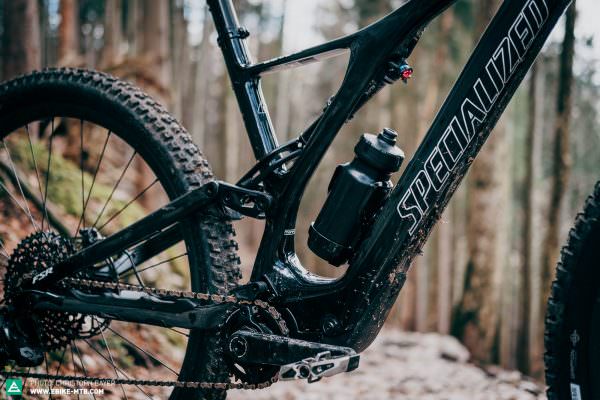
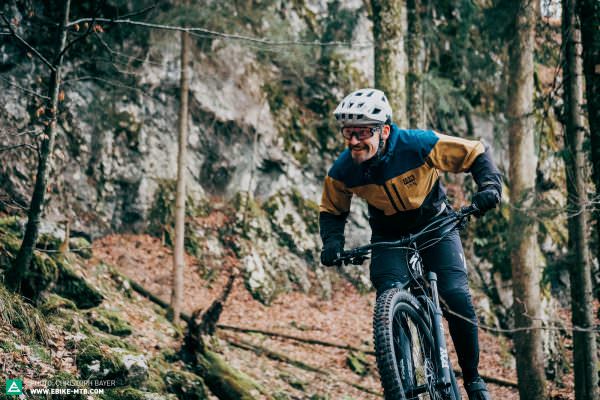
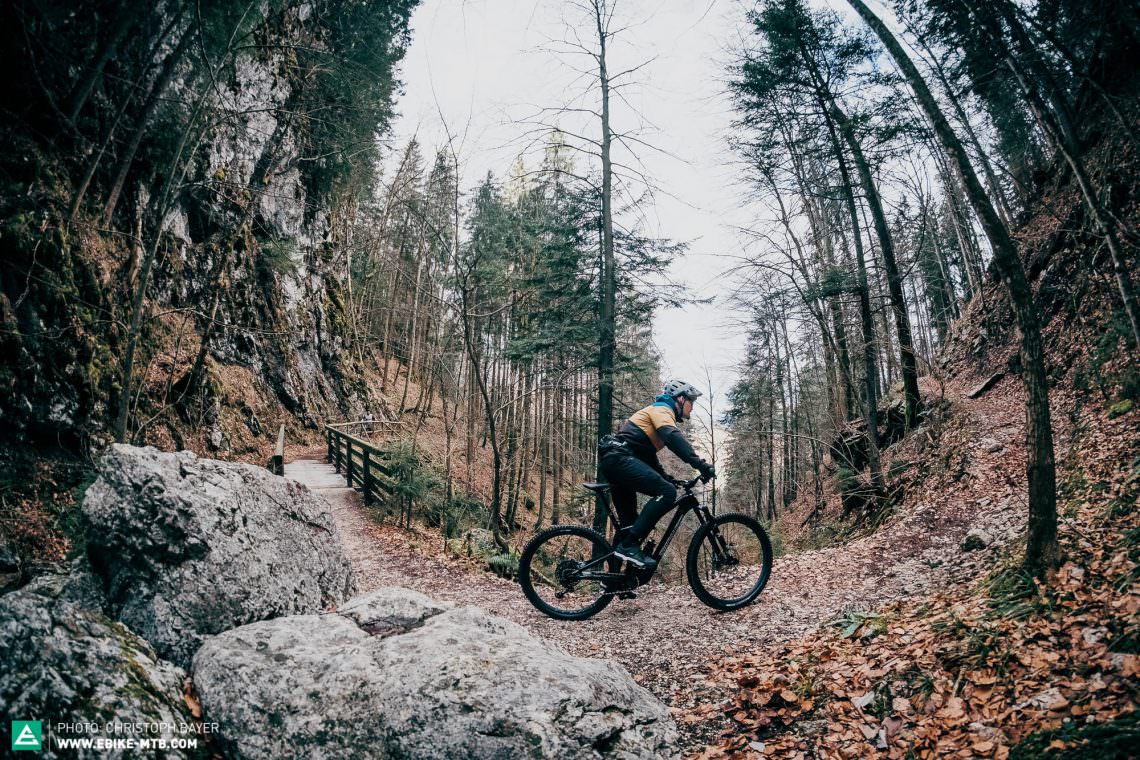
Spec, weight and technical data of the Specialized Levo SL Expert
If you look at the spec list of the Levo SL Expert in isolation, you might ask yourself why it costs € 2,700 more than the NOX and Lapierre. Surely the carbon rims of Specialized’s in-house Roval Traverse wheelset alone can’t justify such a huge price gap – especially given that they’re laced onto a more budget and heavier DT Swiss 370 hub on the rear wheel. For bikes in this price range, we expect nothing but high-end components. And while it’s true that Specialized have put weight before performance with the Levo SL, saving grams on the fork and brakes is never a good idea. Unfortunately, the SRAM G2 RSC brakes with small 180 mm rear rotor quickly overheat on long descents. Similarly, Specialized chose a FOX 34 Performance fork over a stiffer and sturdier 36 model, like the one specced on the Lapierre. On a positive note, unlike the eZesty, the FLOAT DPS Performance shock here offers three-stage compression adjustment in the open mode.
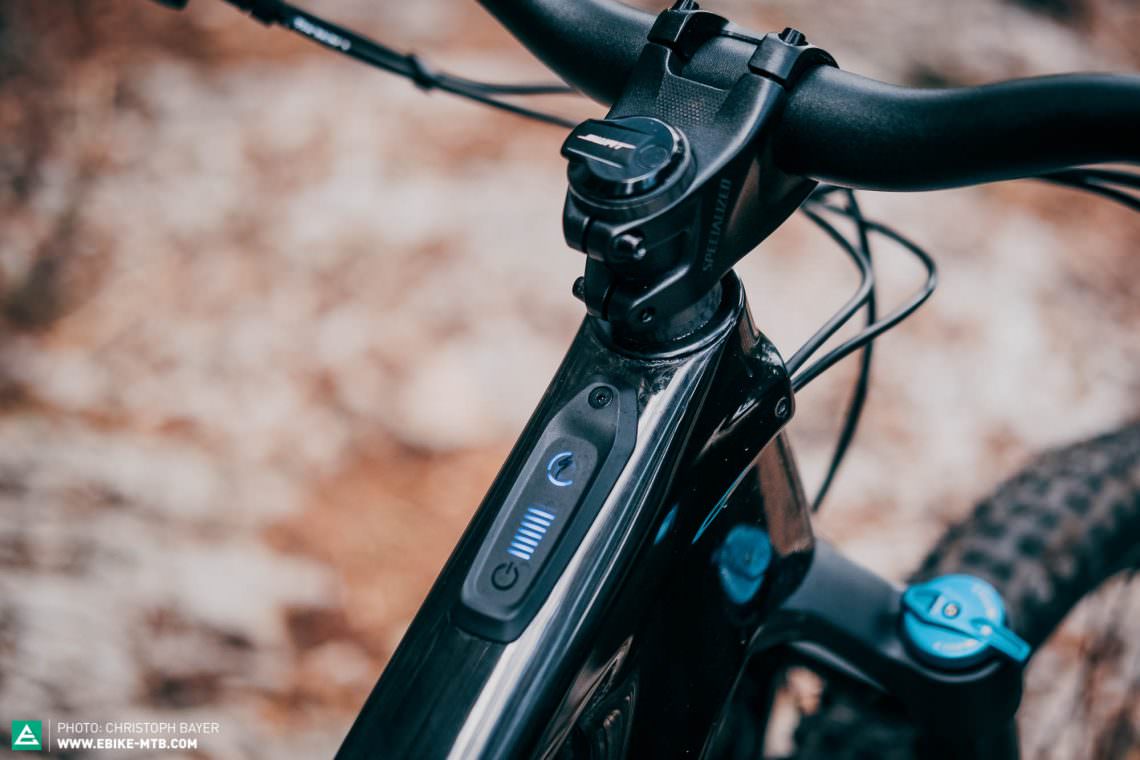
The Turbo Connect Unit is the linchpin for third party devices such as a Garmin or Wahoo, for the handlebar remote as well as the optional Turbo Connect display.
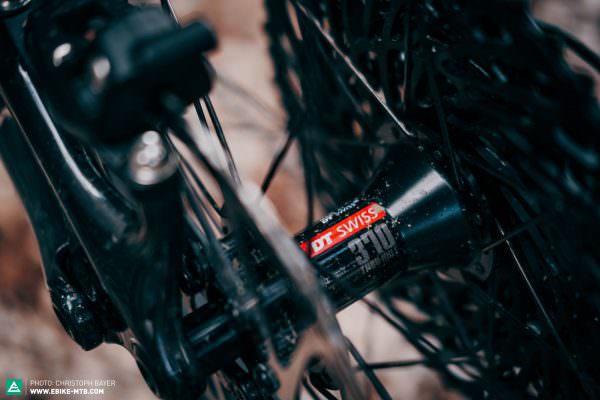
Specialized use their in-house Roval SL carbon rims but lace them to a heavy DT Swiss 370 hub.

The speed sensor is integrated in the dropout and the magnet is safely attached to the rotor – a bombproof solution!
Specialized Turbo Levo SL Expert
€ 8,699
Specifications
Motor Specialized SL 1.1 35 Nm
Battery Specialized SL1-320 320 Wh
Display Specialized TCU
Fork FOX 34 Performance 150 mm
Rear Shock FOX DPS Performance 150 mm
Seatpost X-Fushion Manic 125 - 170 mm
Brakes SRAM G2 RSC 200/180 mm
Drivetrain SRAM GX Eagle 1x12
Stem Specialized Trail 40 mm
Handlebar Specialized Trail 780 mm
Wheelset Roval Traverse Carbon 29"
Tires Specialized Butcher/Eliminator GRID 2.3"
Technical Data
Size S M L XL
Weight 17.7 kg
Perm. total weight 130 kg
Max. payload (rider/equipment) 112 kg
Trailer approval no
Kickstand mount no
Specific Features
optional Range Extender (400 €)
integrated multitool

Specialized offer the Levo SL only with 29” wheels. They really are a perfect match, because the Levo is still the most nimble bike on test.
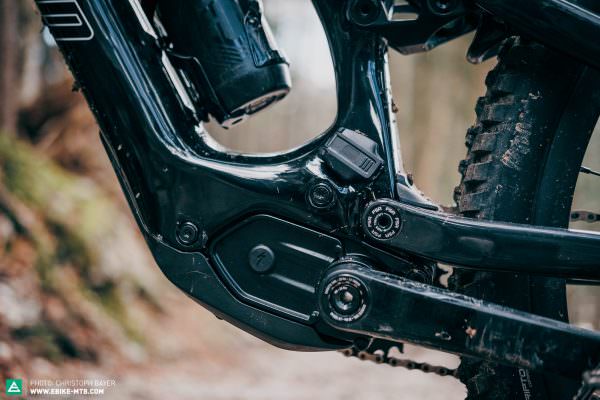
Specialized deliberately chose not to use a removable motor and battery. By doing this they can integrate the small and light SL 1.1 motor into the frame as snugly as possible.
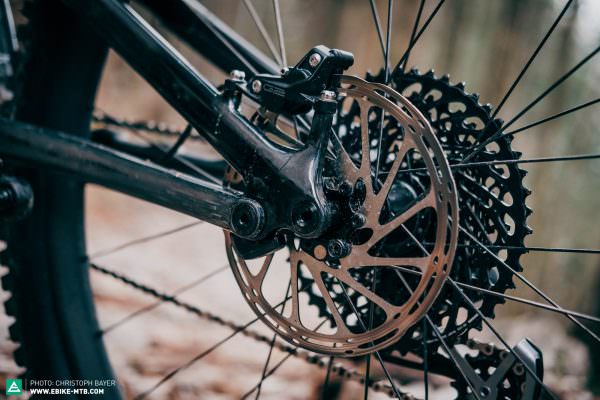
On the rear wheel, the SRAM G2 RSC relies on a small 180 mm rotor. It doesn’t provide enough braking power and heats up too quickly on long descents.
Geometry and sizing of the Specialized Levo SL
Though the Levo SL is the youngest bike in this test, the geometry of Specialized’s 29” light eMTB is rather conservative compared to the NOX and Lapierre. With a reach of 455 mm (size L) it’s the shortest bike on test. Like the Lapierre, the seat angle is also on the slack side. A flip chip allows you to make small adjustments to the geometry and adapt the riding position to your liking. We like (and recommend) the slack setup best. Unlike NOX and Lapierre, who release their bikes in a limited range of sizes, Specialized offer the Levo SL in four frame sizes, ranging from S to XL.
| Size | S | M | L | XL |
|---|---|---|---|---|
| Seat tube | 390 mm | 410 mm | 455 mm | 505 mm |
| Top tube | 574 mm | 597 mm | 629 mm | 663 mm |
| Head tube | 95 mm | 95 mm | 125 mm | 140 mm |
| Head angle | 66.0° | 66.0° | 66.0° | 66.0° |
| Seat angle | 75.3° | 75.0° | 74.6° | 74.2° |
| Chainstays | 437 mm | 437 mm | 437 mm | 437 mm |
| BB Drop | 27 mm | 27 mm | 27 mm | 27 mm |
| Wheelbase | 1,165 mm | 1,185 mm | 1,217 mm | 1,248 mm |
| Reach | 415 mm | 435 mm | 455 mm | 480 mm |
| Stack | 606 mm | 606 mm | 633 mm | 647 mm |
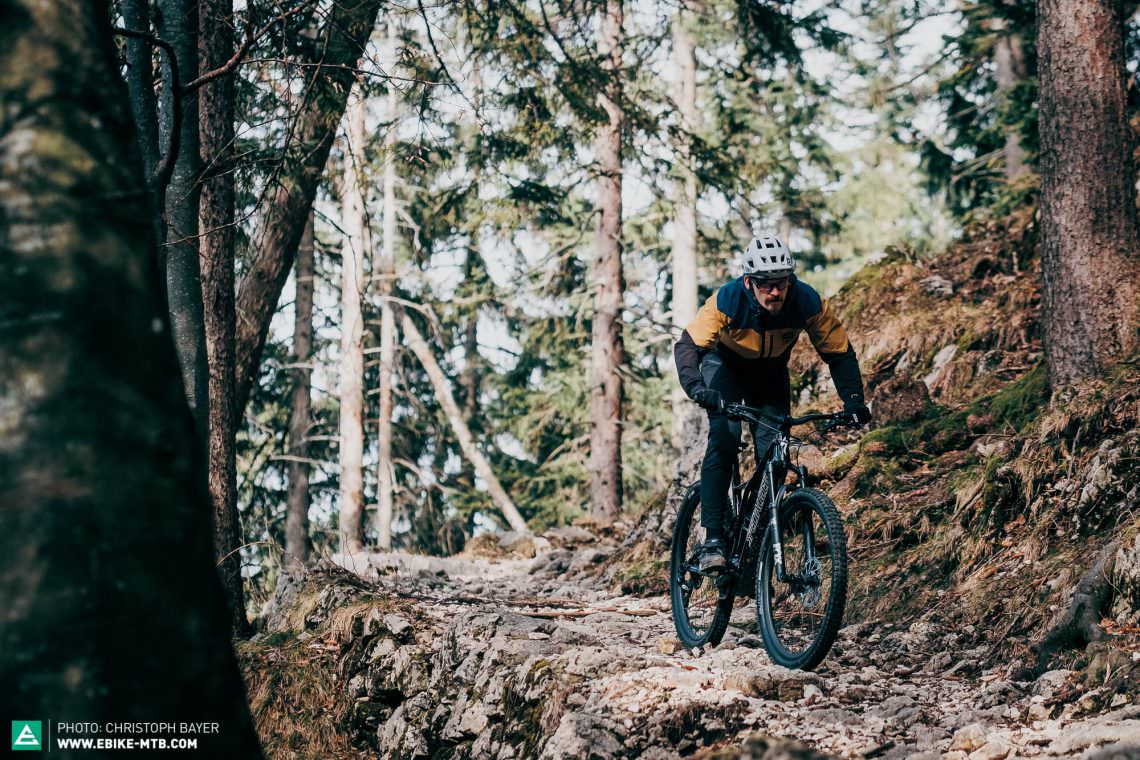
The integration and user experience of the Levo SL are next level. FAZUA can (and should) take a leaf out of Specialized’s book.
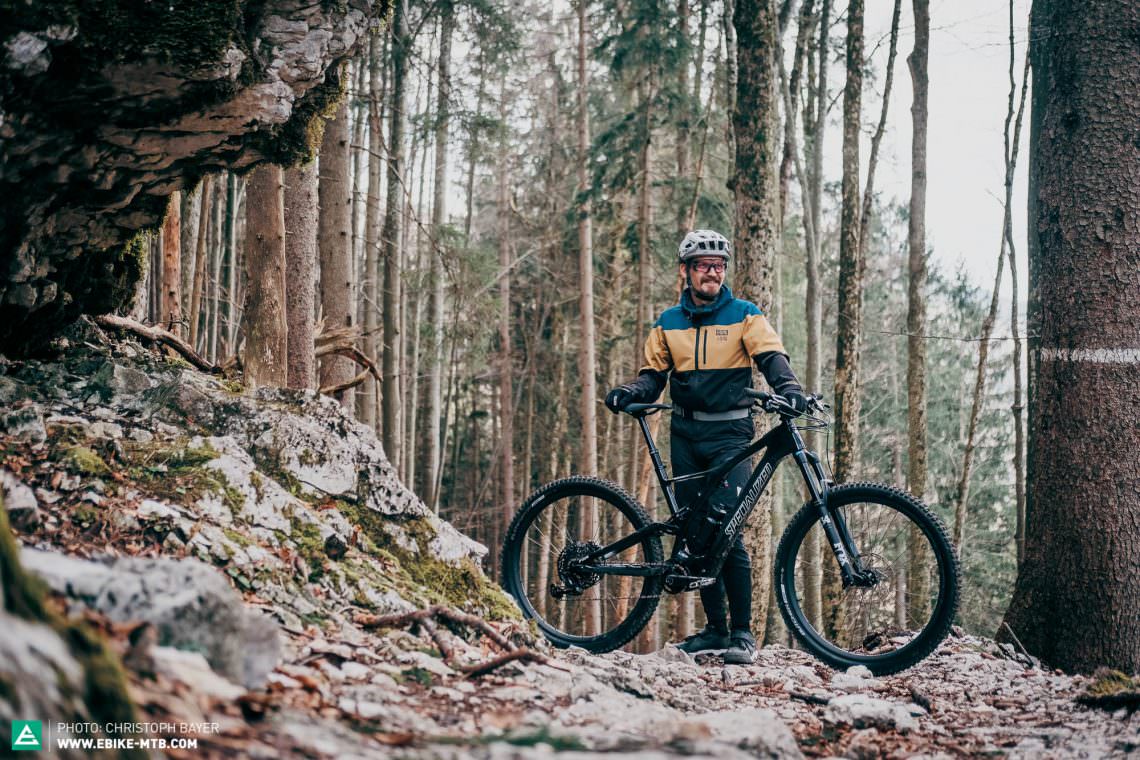
Specialized Levo SL Expert on test
On flat trails, the riding position of the Specialized Levo SL is as just comfortable as the Lapierre. Bring on long rides! The rear end of the Levo SL doesn’t sink into the travel as much as its French counterpart, even when climbing steep ramps, though it can feel like you’re pedalling slightly from behind. That said, you can compensate for this by pushing the saddle all the way forward and using the climb switch. The Levo SL handles technical climbs better than the Lapierre but can’t keep up with the NOX which offers clear advantages thanks to its efficient riding position and powerful motor. In comparison, the Specialized SL 1.1 drive requires more physical effort from the rider to develop its power. However, this only serves to make the Levo SL feel even more natural in all support modes. On steep climbs, the front end of the Specialized needs to be loaded more actively than the NOX to prevent the wheel from lifting. The Levo SL prefers winding its way up the hill meandering around obstacles instead of rolling over them.
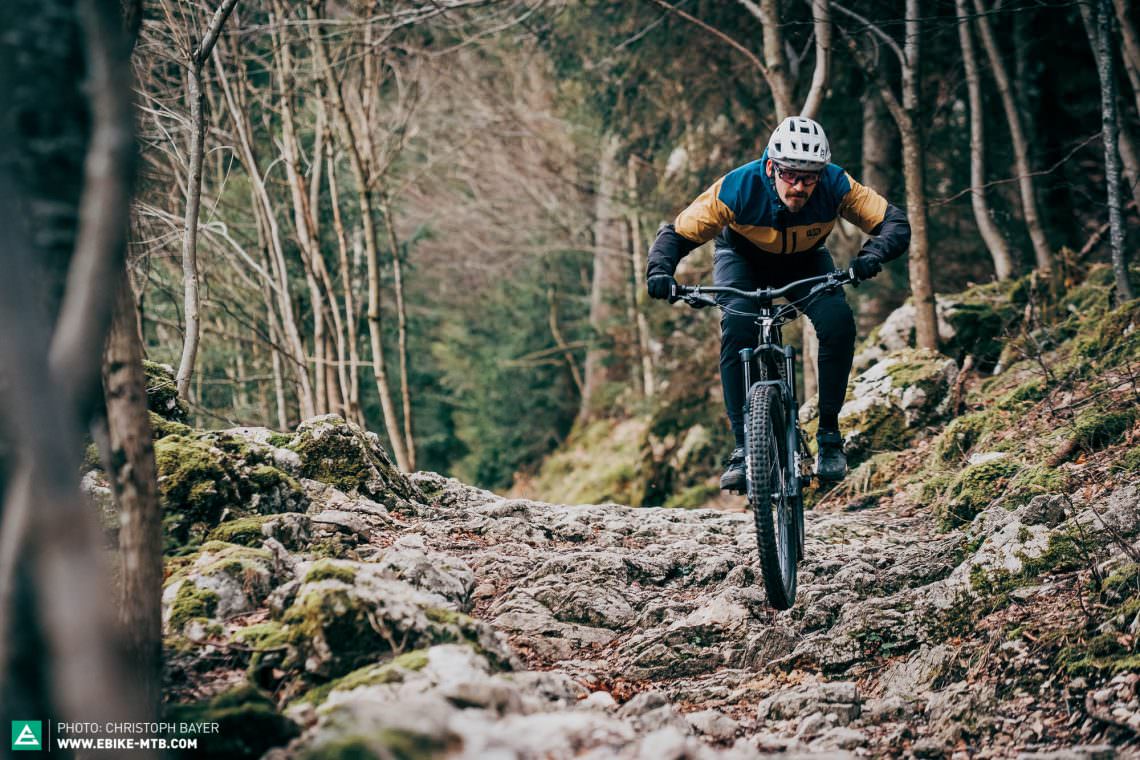
Downhill, the Levo SL strikes a perfect balance between stability and playfulness. It is incredibly intuitive, easy to ride and can be thrown through corners – and rock gardens – without breaking a sweat. The suspension tune is on the plush side, meaning the Levo SL eagerly swallows up hits while generating tons of traction despite the low-profile 2.3” Specialized Eliminator tire on the rear. Like the Lapierre, the Levo SL requires more muscle for playful manoeuvres and jumps, but can still be thrown around in the air or slammed into a berm without any problems. Similar to the Lapierre, the rear end and fork of the Levo SL flexed quite a lot when ridden aggressively by one of our heavier riders. Unfortunately, the upper shock mount and main pivot axle loosen relatively easily, which means you have to check them regularly. On top of this, the brakes really struggled with our heavier test riders on long, steep descents. That aside the Levo SL Expert convinced us in all riding situations on normal trails.
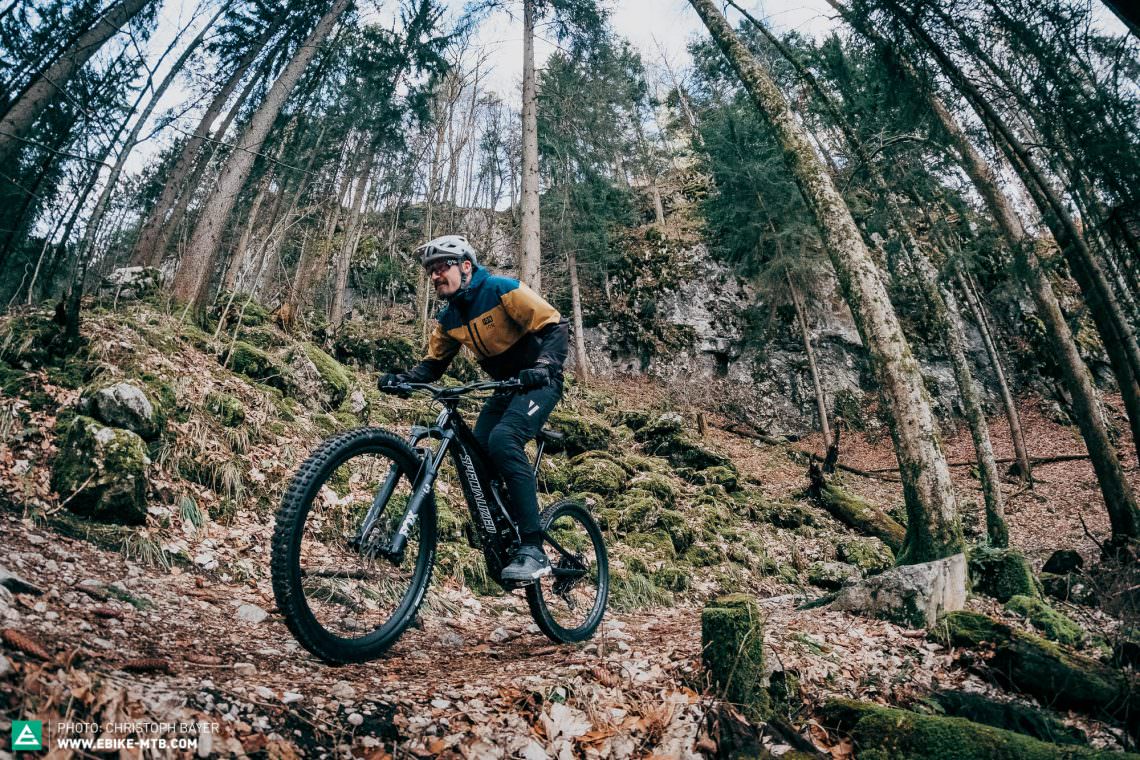
Tuning tips: push the saddle all the way forward | 200 mm brake rotor on the rear | Grips | loctite on the suspension linkage bolts

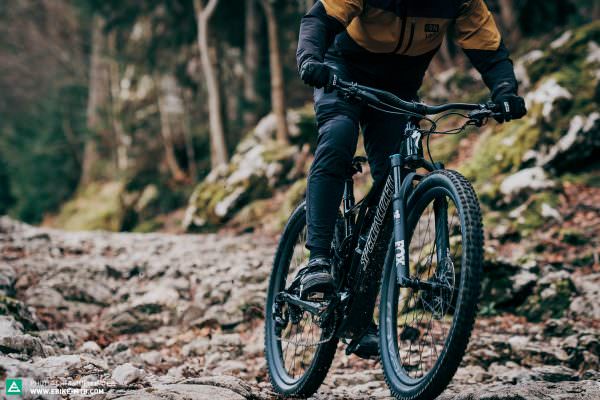
Conclusions
If you hold the spec list of the Levo SL against its price tag, you’ll most likely spit out your coffee. But really, it’s a bike’s performance that counts when you hit the trails and that’s exactly where the Levo SL Expert shines. In this test it comes out on top with the most natural ride and best handling, both uphill and downhill. While both the Lapierre and NOX show weaknesses either up- or downhill, the Specialized delivers impressive performance for both scenarios while delivering unmatched motor integration and user experience. Despite minor inconsistencies in the choice of components, the Specialized Levo SL secures our coveted Best in Test badge!
Tops
- integration and user experience of the SL 1.1 motor
- intuitive yet lively handling
- natural ride feel of the motor
Flops
- weak brakes
- rear end needs constant maintenance
You can find out more about at specialized.com
The test field
Click here for an overview of the best light eMTB of 2020 – 3 super lightweight e-bikes in review
All bikes in test: Lapierre eZesty AM 9.0 (Click for review) | NOX HeLIUM 5.9 All Mountain Expert (Click for review) | Specialized Levo SL Expert
Did you enjoy this article? If so, we would be stoked if you decide to support us with a monthly contribution. By becoming a supporter of E-MOUNTAINBIKE, you will help secure a sustainable future for high-quality cycling journalism. Click here to learn more.
Words: Photos: Christoph Bayer









